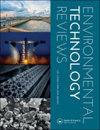Recent advances on magnetic natural coagulant: a mini review
Q1 Environmental Science
引用次数: 9
Abstract
ABSTRACT Utilisation of natural coagulants in water and wastewater treatment has gained a considerable amount of interest in recent years. This is possible due to its advantages such as being renewable, being affordable at a relatively low cost, producing biodegradable sludge with less sludge generation. However, there are some drawbacks in the utilisation of natural coagulant, namely its long settling time and increase of organic content when a crude plant extract is used. To surmount these obstacles, a combination of magnetic iron oxide nanoparticle (IONP) with natural coagulant (i.e. magnetic natural coagulant) is introduced to enhance the coagulation performance. The purpose of this review is to provide extensive discussions on the recent progress of magnetic natural coagulant, especially over the last ten years. Most of the recent studies used protein extract from legumes as an active coagulating agent in the magnetic natural coagulant preparation with two different approaches. The dispersion approach used crude extract functionalised with IONP, while the adsorption approach immobilised protein on the surface of unmodified or modified IONP. In both approaches, protein acts as an active coagulating agent with a charge neutralisation mechanism. Due to the presence of IONP, the settling time is greatly reduced under the presence of external magnetic force, typically from 60–90 min to 5–30 min, while maintaining a good coagulation performance in various types of water – wastewater. Future studies of other coagulant preparation methods, applications to other active coagulating agents, and efforts to increase the coagulation efficiency are needed prior to its pilot – commercial scale application. GRAPHICAL ABSTRACT磁性天然混凝剂的研究进展
近年来,天然混凝剂在水和废水处理中的应用获得了相当大的兴趣。这是可能的,因为它的优点,如可再生,价格低廉,成本相对较低,生产可生物降解的污泥产生较少的污泥。然而,天然混凝剂的使用存在一些缺点,即当使用粗植物提取物时,其沉淀时间长,有机含量增加。为了克服这些障碍,引入磁性氧化铁纳米颗粒(IONP)与天然混凝剂(即磁性天然混凝剂)的组合来提高混凝性能。本文综述了近年来磁性天然混凝剂的研究进展,特别是近十年来的研究进展。近年来的研究大多采用豆科植物蛋白提取物作为活性混凝剂,采用两种不同的方法制备磁性天然混凝剂。分散法使用被IONP功能化的粗提物,而吸附法将蛋白质固定在未修饰或修饰的IONP表面。在这两种方法中,蛋白质作为一种具有电荷中和机制的活性凝血剂。由于IONP的存在,在外加磁力作用下,沉淀时间大大缩短,一般由60-90 min减少到5-30 min,同时在各类水-废水中保持良好的混凝性能。在中试商业规模应用之前,需要进一步研究其他混凝剂的制备方法,应用于其他活性混凝剂,并努力提高混凝效率。图形抽象
本文章由计算机程序翻译,如有差异,请以英文原文为准。
求助全文
约1分钟内获得全文
求助全文
来源期刊

Environmental Technology Reviews
Environmental Science-Water Science and Technology
CiteScore
6.90
自引率
0.00%
发文量
8
 求助内容:
求助内容: 应助结果提醒方式:
应助结果提醒方式:


